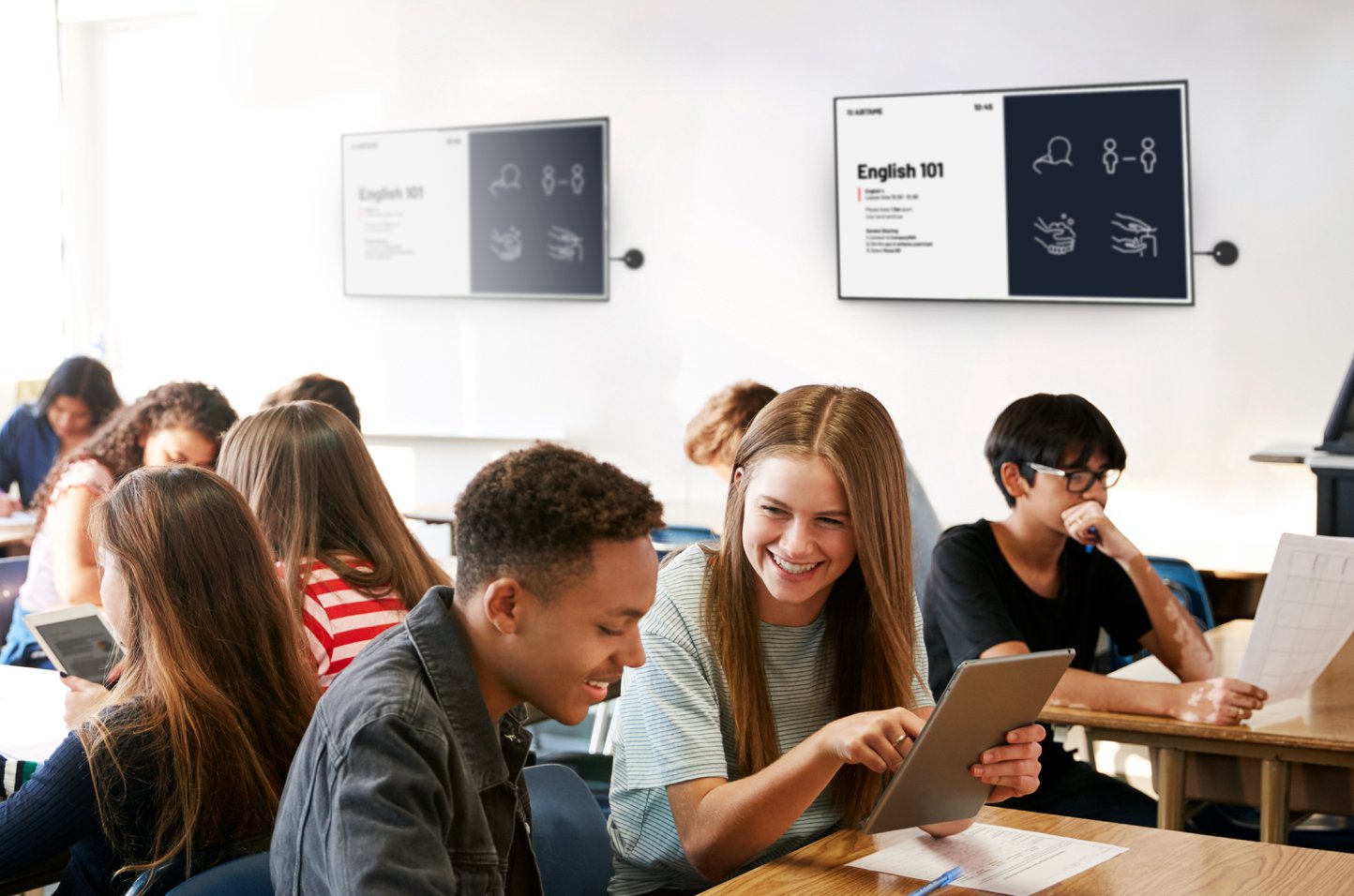Some cities are seeing students gradually return to school. Here’s how digital signage in classrooms can help keep students and teachers safe and informed.

Some cities are seeing students gradually return to school. Here’s how digital signage in classrooms can help keep students and teachers safe and informed.
COVID-19 has had a significant impact on education facilities around the world, with most governments temporarily closing schools and universities for extended periods of time in an effort to contain the virus. These global closures have impacted 91% of the world’s student population — that’s over 1 billion learners.
As the world continues to grapple with COVID-19 and, over the coming months, slowly works towards returning to a new kind of normal, the way schools operate will change dramatically for the foreseeable future. Now more than ever, schools will be required to put health at the forefront of all operations and communication, and implement stringent social distancing and hygiene measures to keep students and employees safe.
When it comes to sharing safety messages, it’s important to over-communicate in order to nudge students and staff to adopt the correct behavior. We’ve all seen examples of posters around classrooms and noticeboards in school hallways, but as the situation continues to evolve and guidelines change overnight, these traditional forms of communication are no longer scalable. The way forward is to utilize already existing equipment such as TV screens, together with digital signage to share important information in a more dynamic, flexible way. On digital signage, Schaeffler notes that providing “the right message, at the right time, to the right audience, can and should motivate the audience to do things that they otherwise would never have done.” Digital signage provides educators with an additional communication channel to share important messages with students, encouraging them to adopt extra safety precautions.
From classrooms to libraries to cafeterias, schools are made up of different areas that serve completely separate purposes and require different messages to be communicated. In this blog series, we’ll take a look at some of the spaces where schools should be utilizing digital signage and give practical examples of how Airtame can improve safety and awareness within different contexts.

After attending virtual classes from home for several weeks, many students will find it difficult to adjust back to a regular class schedule, while also upholding health and safety measures. Using Homescreen on Airtame Cloud Plus, customize your Homescreen to share the main priorities of the lesson and remind students of any safety protocol that must be adhered to, such as keeping a safe distance from each other and prompting them to use Airtame to present wirelessly without the need to pass around any cables or dongles. Providing a clear breakdown of the lesson structure will encourage better focus and help ensure the class finishes and ends on time. You can also adjust the image shown on Homescreen as a visual reminder of the safe behavior that is expected of them in the classroom.

While common practices such as social distancing and increased personal hygiene are being universally adopted during COVID-19, each school is likely to have its own specific safety measures in place, according to government recommendations. Using a tailored Google Slide, or the information shared on your school website, you can remind students of the safety procedures they need to follow both inside and outside the classroom, such as what to do if they feel unwell.
Often, a combination of imagery — whether it be static images or video — is effective in catching students’ attention when it comes to digital signage in the classroom. The most important consideration is that what is shown on screen is clear and will allow you to get your message across effectively. For example, the World Health Organization provides downloadable materials that can be saved to Dropbox or Microsoft Onedrive and uploaded to a screen in the classroom. There is also the option to play YouTube videos in the background, or stream YouTube Live, to keep students informed when it comes to personal hygiene and safety during COVID-19.
Using digital signage in schools and universities is not only an effective way to get safety messages across, but the method itself of disseminating information is safe. With Airtame Cloud Plus, IT administrators, communications departments and teachers can remotely update and manage what is shared on screens around the school, without having to physically touch noticeboards in hallways or whiteboards in classrooms.
On top of that, any Airtame-equipped screen also offers wireless screen sharing, keeping presenters safe without the need to share any cables or dongles that may be contaminated.
If you haven’t yet signed up for Airtame Cloud Plus, contact us to learn more.
Stay tuned for our next blog in the series, focussing on how to utilize digital signage in open spaces on campus.